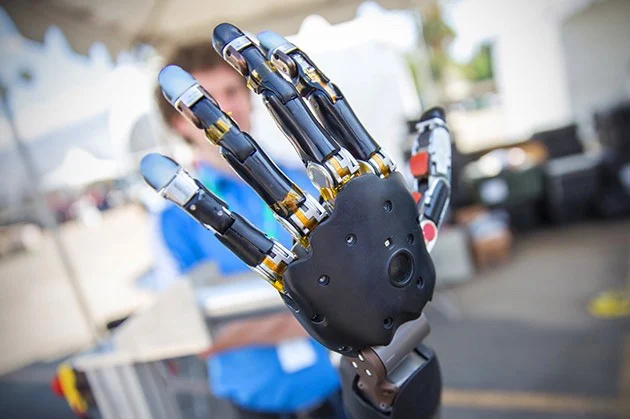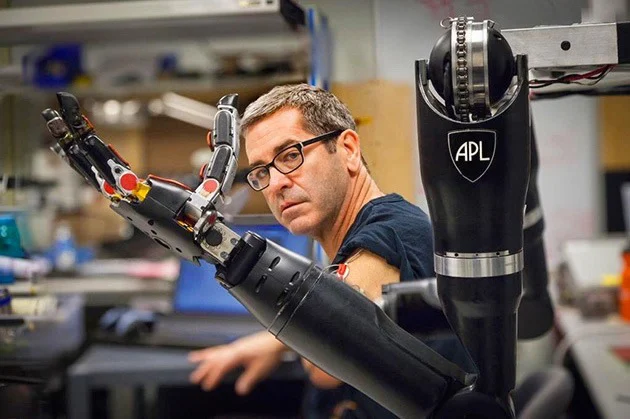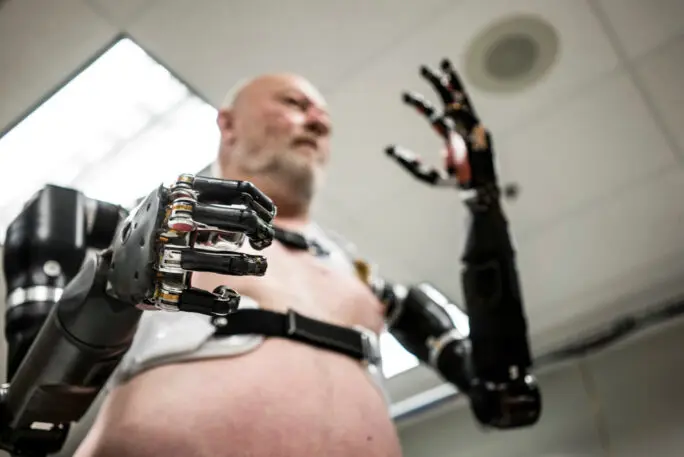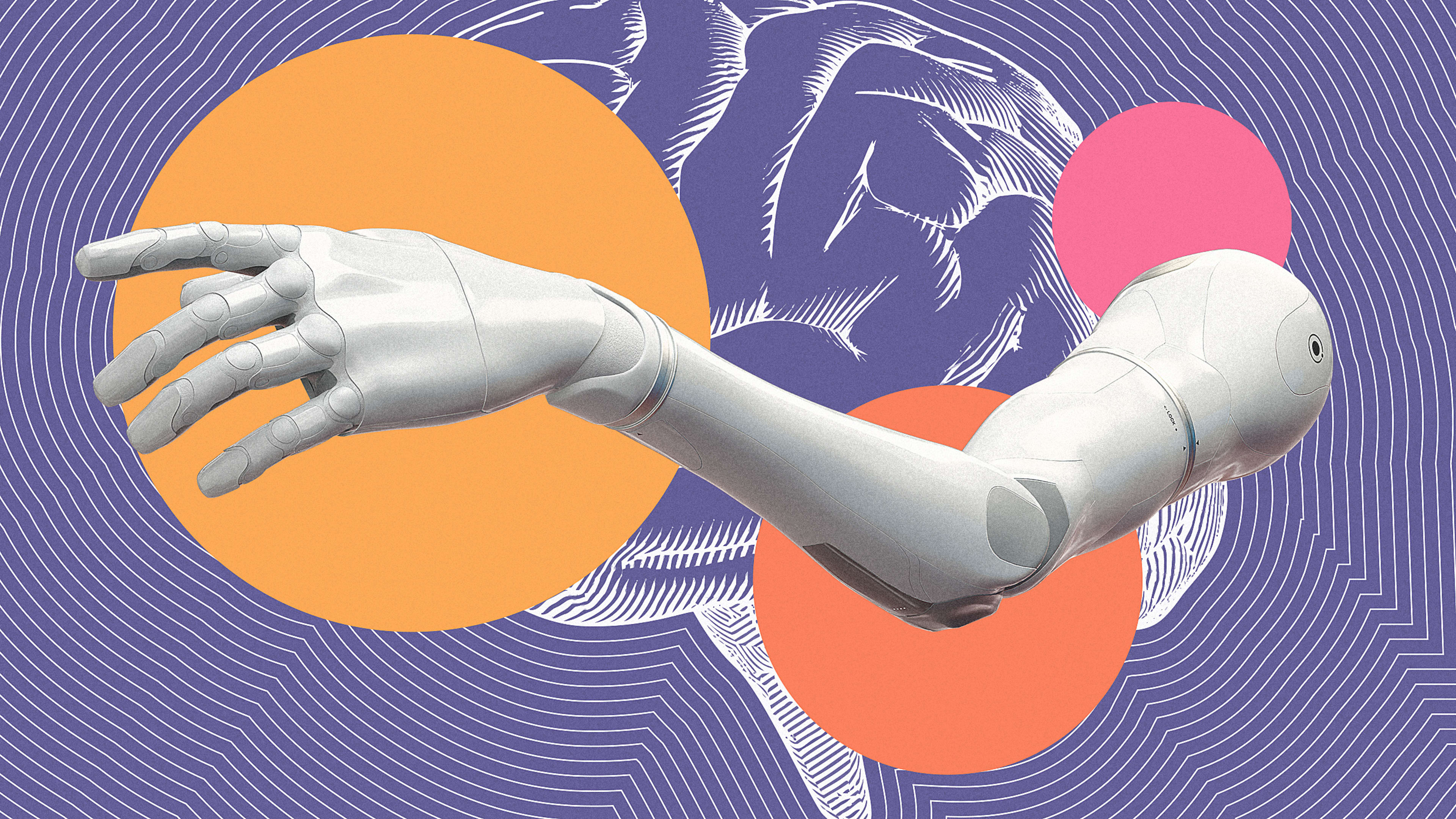A typical prosthetic arm still looks essentially the way it has for more than a century, with a simple hook that can open and close to squeeze and hold objects. An artificial arm now in development works very differently: The hand on the device is connected to a bracelet that can read muscle signals in an amputee’s stump, so that person can move, tap, and squeeze artificial fingers simply by thinking.

The technology was first developed over a decade of research at Johns Hopkins’ Applied Physics Laboratory with a $120 million grant from the Department of Defense. Hayes, a serial entrepreneur, saw a video of an early prototype and reached out to the university, creating a partnership to launch it as a product. “The work for the last six months has just been moving from what you call a research prototype, which is what they have made, to the development prototype that we’re making,” he says.


Johnny Matheny, who tested three previous versions of the arm as Johns Hopkins developed it, says that there’s no comparison to the hook he uses now. “That’s like asking if the Wright Brothers plane is as useful as a supersonic jet,” he says. Matheny used the artificial arm to do things that wouldn’t have been possible otherwise, including learning to play the piano. The challenge, he says, is whether insurance will pay for it; systems like Medicare don’t even know how to deal with smaller innovations, such as waterproof prosthetics. Bureaucracy needs to change to keep up with technology. “Unemployment doesn’t want to pay people that can get an arm and go back to work in their regular jobs,” he says.”And then you’ve got Medicare, which doesn’t want to approve the new arms for them to be able to do that.”
In the coming year, Atom Limbs plans to begin tests of the newest version of the arm with amputees, while it simultaneously launches a robotic version for industrial use in factories. They aim to bring the prosthetic to market in 2023, with an artificial leg to later follow.
Recognize your brand’s excellence by applying to this year’s Brands That Matter Awards before the early-rate deadline, May 3.
